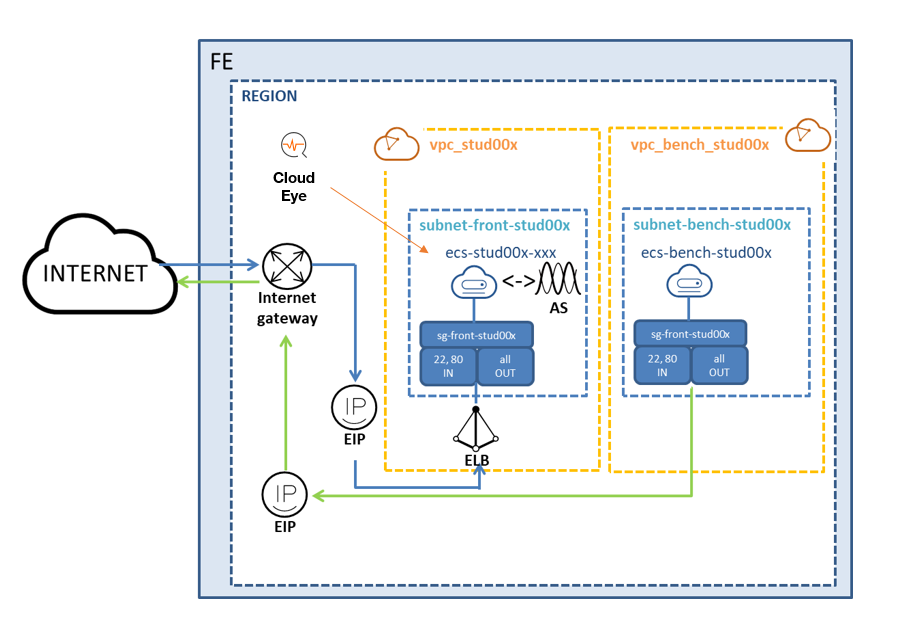The purpose of this tutorial is to drive you in the discovery of the advanced features of the Flexible Engine, which offers a display of architecture with high performance that is resilient, secured, and capable of adapting itself automatically to the load to which it is subjected.
Legal warning
Orange Business assumes no responsibility for any malfunctioning of the service and/or loss of customer data due to failure to comply with the Customer’s terms of service.
Introduction
|
Important! In the rest of this document, we assume the basic concepts and functionalities of the Flexible Engine. We refer the reader to the Getting Started Guide for acquiring this knowledge. |
The purpose of this tutorial is to drive you in the discovery of the advanced features of the Flexible Engine, which offers a display of architecture with high performance that is resilient, secured, and capable of adapting itself automatically to the load to which it is subjected.
The components of such an infrastructure are:
- Two subnets, one on which the web frontal exposed on the internet will be developed, and the other on which the test environment will be tested service will be hosted ( step 1),
- Security rules to prohibit any access other than those explicitly authorized (step 1),
- One to several web frontal – Apache under Linux – (step 2),
- An Image of your ECS to feed the AS Service ( Step 3)
- A load balancer relaying the requests of internet users to the web frontal (step 4),
- A self-scaling mechanism to adapt the number of web frontal according to their load, to maintain optimal performance regardless of the number of requests to be processed (step 5)
- A DDoS security device protecting the web frontal end of this type of attack (step 6) ;
- A web frontal load monitoring service (step 7)
Finally, we will deploy a test infrastructure to verify the correct functioning of our website and in particular its adaptation to peak loads (step 8).
The target infrastructure is illustrated below:
